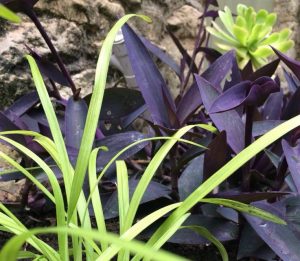Weather Watch: Protecting tender plants

Gardeners must keep a beady eye on the weather at the best of times. But at this time of year it becomes a mania – especially with the quick onset of Autumn we have been experiencing this September. As well as the day by day questions of how much rain, wind or sun we are getting, baseline temperatures become an ever more pressing issue. Many plants need protection from the seasonal cold.

As soon as the thermometer drops, we start to think about risk of frost. When the night-time temperatures are going to be 5 or below, that is when you need to be ready to act. The last of the tender plants need to come inside, to eliminate all risk of frost damage. Greenhouses should have vents closed overnight, and you may want to think about insulation and heating. Cold frames must be closed overnight unless you have truly hardy plants in there. So make sure you are checking the weather regularly (via app, weather forecast, met office website…). Once you notice it is getting consistently cooler, keep a more frequent check on the projected night time temperatures and try to ensure you have a bit of time to prepare yourself.
At work, my tender plants will go into a clean, airy, heated greenhouse. But at home I have to be a bit more creative. With no greenhouse, cold frames, or even much space in a small house, I have to sneak plants into whatever nooks might work.

From my own garden, I’m bringing in pelargoniums and more tender salvias, which involves potting them up if they have been planted out in the border over the summer. They will then start their winter sojourn on the windowsill by the stairs, replacing the Asplenium nidus (Birds Nest Fern) which lives there during the summer. It’s a drafty corner with a broken heater and a big window. It’s not the most pleasant part of the house for humans in winter. But it provides a frost-free and well ventilated environment for overwintering plants. My Aeonium will become a houseplant again, moving back to the windowsill in the warmer living room, next to the aforementioned Asplenium, as both need a bit more comfort than the cold stairwell can offer in winter.
The Dahlias can wait until a frost knocks them back – the roots will survive as long as I don’t leave them until the soil itself is frozen. Then they will be dug up and left to dry in the dark shed. The big Cycad in a pot will move to a sheltered corner of the patio. It is too big to come inside the house (if I owned a conservatory, this would be ideal). But in this corner, warmth coming from the house will usually keep the area frost-free. I’ll cover this plant with horticultural fleece when the weather gets more severe in winter.
Of course there are risks you can take:

With milder winters in recent years, many have found dahlias survive in the ground outside, without the laborious task of lifting, drying and storing the tubers (to repot in spring, sprout in a sheltered spot, then replant when summer comes). Wet ground can however be a problem, and rot can kill the root tubers as easily as freezing can. So if you’re willing to take the chance that you might have to replace them next year, you could leave them where they are. I am doing this with my Tradescantia pallida (Purple Spiderwort) this year, simply leaving it to romp on through the small bed it is in, hoping that, while the growth above ground will die back once it gets cold, the roots will be strong enough to survive underground and I will get a nice surprise if it regrows in late spring.

The salvias which I left out in the garden over last winter fared well and have been stronger and more floriferous this summer than the ones I brought in. So this year I have gone for a different insurance policy – by taking cuttings in late summer. These have now rooted and I have a few plants which will grow on inside (on the bedroom windowsill) during the winter. The parent plants will stay put in the border: I will cut them back when the leaves die, and mark their spot with a label so I don’t forget they are there. If they fail to make it through the winter, I will have some new plants ready to replace them with.
This month, I decided to educate myself a little more about the weather. I took my first FutureLearn course. It is called “Learn About The Weather” and covers the basic atmospheric processes which cause weather. You can find out more about it here.
I bought a couple of chilli plants this summer which have produced a good crop in pots in a sheltered garden. Do they need to be brought in for the colder weather? I’m not sure which variety of chillis I have, but I assume that they will fruit if I winter them indoors. Is that true of all chilli varieties?
Hi Jim, you are right to think about this. Chilli plants will survive over winter if kept in temperatures above 5 degrees (Celsius). You could use a heated greenhouse, or an inside windowsill to keep the plant. However, if you are in the UK (or similar latitude) then it will not keep producing chillis through the winter even if kept warm. This is because when the days get shorter, the plant won’t get enough natural light to stimulate it to flower and fruit. The best thing to do is to pick all the remaining chillis and then cut your chilli back so that the main stem or stems are only about 15cm long. Bring it inside and keep it only very lightly watered (the soil should remain quite dry) through the winter. It may lose all its leaves but should stay alive (like a tree in winter). When the weather gets warmer in late spring, water it and put it outside in a sunny spot again. Once it starts to sprout, water and feed it regularly again.
The advantage of overwintering is that you will have a stronger plant that starts producing chillis again more quickly next year.
Hope that helps and good luck!